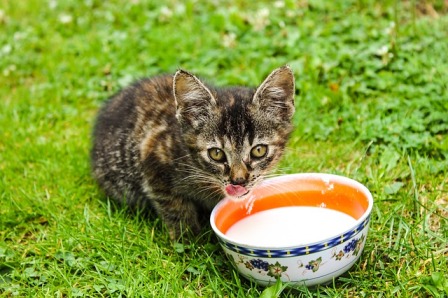What Is the Best Way to Keep Cat’s Bowls Clean?
What Is the Best Way to Keep Cat’s Bowls Clean?
Cat’s bowls belong to one of the riskiest places when it comes to a cat’s health. They are very sensitive to bacteria, mold and fleas. They are ideal spots for spreading parasites and diseases, and what is more surprising, according to NSF International, they fall into one of the four dirtiest places in our homes. Thus, if we want our cat to be happy and healthy, keeping cat’s bowls clean is the most important task we obliged us with when adopting a cat. Experts, also, suggest paying attention to the quality of material the bowls are made of. According to them, the best quality bowls, easy to maintain and keep clean, are the one made of ceramics and stainless steel. Plastic bowls represent the riskiest type, because they are easy to scratch, which in turn leaves the small fissures suitable for flourishing bacteria. In order to reconsider our cleaning habits and find out what is the best way to keep cat’s bowls clean, the article “How to Clean Food and Water Bowls” explains the cleaning procedure in detail.
What Is the Best Way to Keep Cat’s Bowls Clean?
Using the Dishwasher
For most pet dishes, unless yours is especially delicate (perhaps hand painted by Great Aunt Mildred), you can simply put them in the dishwasher. Just remember, if the bowl is plastic, to place it on the top rack so that it doesn’t melt. Run the dishes through the entire cycle as normal. You can run them in the same load as the rest of your dishes; no need to wash them separately.Washing by Hand
If you’d prefer to wash your pet’s dishes by hand, just bring them to the kitchen sink, grab a clean sponge and get to scrubbing. Run warm or hot water as you wash the bowls (though not so hot that you risk burning yourself!) and add a squirt or two of nontoxic dish soap made for hand-washing. If your pet bowl is made of glass, make sure it is warm (at least room temperature) before you run hot water in it or you could risk breakage.Washing the food dish
The pet food should come off of the dish fairly easily. If it doesn’t, you can always use a steel wool pad for light scrubbing. Just be careful, especially if the dish is ceramic, stainless steel or glass. If you scrub too hard, you risk scratching the surface of the bowl.
Once you’ve scrubbed the bowl clean, rinse it with cold water and dry it with a dish towel or paper towel.Washing the water dish
You can wash the water dish the same way that you wash the food dish. The important thing to remember here is to rinse very well. Although dish soap is not particularly toxic, if the bowl’s not thoroughly rinsed out the water will at least taste funny to your pet. Worst case scenario, it is possible it could make him sick.
If you have a sprayer nozzle on your sink, this can aid you in rinsing the bowl well. You can also get out any remaining residue by wiping the bowl thoroughly with the dish towel or paper towel while you dry it.
Not only that we should clean cat’s bowls thoroughly and regularly, but we also have to keep the cat’s feeding place hygienic. It is also worth mentioning that to keep all the cat’s stuff in one place is a bad idea. Cats do not like to eat, drink, and go to the toilet in the same area of our apartment. They need two separate areas – one for eating and drinking and another for defecation. However, cats are very intelligent beings and very often, they will refuse to eat if they smell bacteria or mold in a dirty dish. Dirty bowls are usually the main reason cats choose to drink from the faucet rather than from their water bowls. For some cats, drinking from a faucet can echo the old ancestral habit of drinking from moving water, but for the majority it is pretty simple – an unkempt bowl. Thus, if we forget to wash cat’s bowls on time, the cat’s unwillingness to eat or drink will alarm us.










